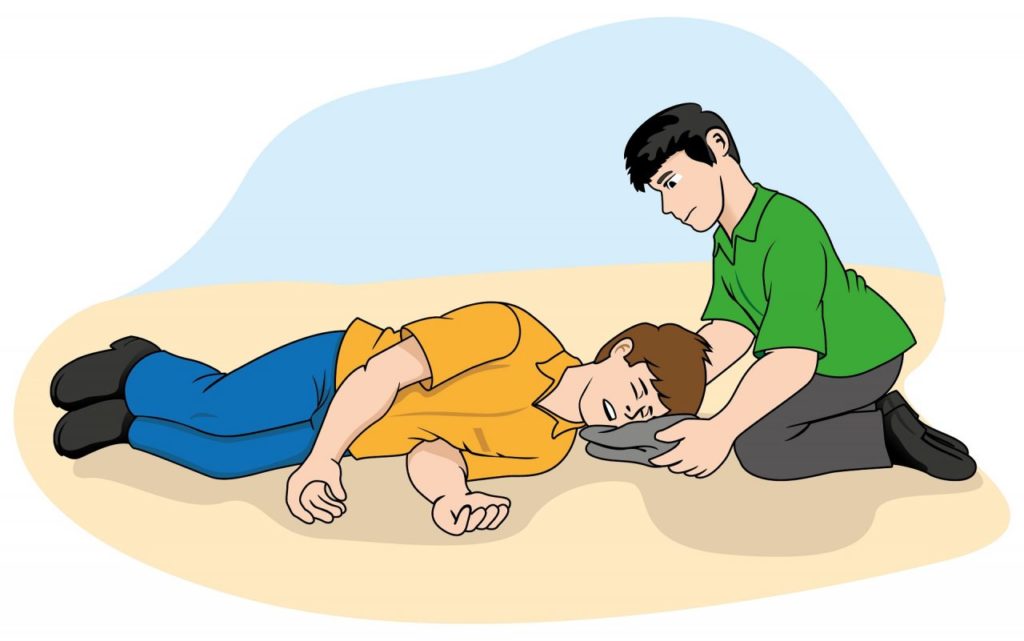What is a seizure?
A seizure is a matter of abnormal electrical signals in the brain that result in temporary and involuntary disruptions in brain function, shaking or contraction of limbs (convulsions),changes in sensory processing, behaviour deviation, and altered levels of coherence.
Seizures can acquire many causes. One common cause is epilepsy, a chronic seizure disorder that can be controlled with medication. Other causes of seizures include the following:
- Fevers or infections
- Head injuries
- Heat stroke
- Poisons (including prescribed and non-prescribed drugs)
- Drug or alcohol withdrawal
- Diabetic emergencies
- Audio-visual stimulation (e.g., flashing lights)
The following are common signs and symptoms of seizures:
- Hallucinations
- Uncontrollable muscle movement
- Eyes rolling upward into the head
- Drool or foaming at the mouth
- Uncontrolled repetitive motions (partial seizures)
A person may experience an aura (an unusual sensation or feeling) before the start of the seizure. If the person recognizes the aura, they may have time to tell someone what is happening and sit down before the seizure occurs. Our training at Coast2Coast First Aid provides you all the tools you would need to help someone who knows they are about to experience a seizure.
What’s the difference between Seizures and Epilepsy?
Seizures and epilepsy are closely related but differ in scope and definition. A seizure is a sudden, uncontrolled electrical disturbance in the brain that can cause changes in behavior, movements, or feelings. It is typically a symptom of an underlying neurological condition rather than a standalone disorder. Epilepsy, on the other hand, is a chronic neurological disorder characterized by recurrent seizures. It involves the predisposition to have seizures and can be diagnosed when someone experiences two or more unprovoked seizures at least 24 hours apart. While seizures can occur due to various factors such as high fever, head injury, or drug withdrawal, epilepsy suggests a chronic tendency to have seizures without these provoking factors. Managing epilepsy often involves ongoing treatment to reduce seizure frequency and improve quality of life, whereas managing seizures focuses on addressing their immediate causes and preventing recurrence, for example with first aid training.

Be Prepared to Help During Seizures!
Join our First Aid Training for Seizures and learn essential skills to respond effectively during a seizure episode. Equip yourself with the knowledge to provide immediate care and support to those in need.
Categories of Seizures
There are many different categories of seizures, and their specific signs and symptoms vary. Common categories of seizures include:

Tonic-Clonic or Convulsive Seizures:
Formerly called “Grand Mal” seizures, the person becomes unresponsive and experiences convulsions. During the tonic phase, muscles will stiffen; during the clonic phase, the extremities will shiver and twitch rhythmically. Saliva that has not been swallowed during the seizure may form as froth at the mouth,and breathing may be irregular as respiratory muscles can be damaged.
A tonic-clonic seizure usually lasts one to three minutes, but can last up to five minutes. The period after the seizure is called the postictal phase. During this time, the body eases its functions to recover from the seizure. The person will slowly regain responsiveness and may appear fatigued, confused, or disoriented.
Absence Seizures:
Formally called “Petit Mal” seizures, the person experiences a brief, sudden error of responsiveness. They may momentarily become silent and have a blank stare, or appear to be daydreaming. The person may also make chewing motions, breathe hastily, blink rhythmically, or make slight movements such as yanking on clothing.
There are no convulsions with absence seizures. Absence seizures are very brief, and usually lasting between two and ten seconds. There is no confusion after the seizure, and the person can usually resume full activity immediately.
Focal or Partial Seizures:
These seizures begin in one specific part of the brain; the signs and symptoms of the seizure vary depending on which region of the brain is distressed. Typically, a focal or partial seizure will affect only one part of the body (arm, leg, etc.) or manner of experience (vision is disturbed, sudden change in emotional state).
The person may or may not remain aware during the seizure. Some focal or partial seizures can evolve into a generalized tonic-clonic or convulsive seizure.
Call 911 and find an AED if:
- You do not know the person or the person’s medical history.
- The seizure lasts more than a few minutes.
- The person has several seizures in a row.
- The person appears to be injured.
- The person is pregnant
- The person is experiencing a diabetic emergency.
- The seizure takes place in water.
- This is the person’s first seizure, or the cause of the seizure is unknown.
- The person does not wake up after the seizure or is unresponsive for an extended period (longer than five minutes)
Some people have multiple seizures during a day, and will likely have a seizure treatment plan in place. The treatment plan will outline when a seizure no longer follows the normal pattern or duration for the person and when to call 911. If you are a friend, teammate, co-worker, or spend a frequent amount of time with someone who has seizures, familiar yourself with their plan if you are comfortable with it. If doable, make sure to have someone as a backup who is familiar with the plan.
During the seizure:
- Protect the person from injury by:
- Moving furniture and other objects that could cause injury out of the way.
- Protecting the person’s head with a soft object (such as a blanket).
- Do not try to hold the person down or stop the seizure from happening.
- Roll the person onto his or her side, if you are able to do so safely
After the seizure:
The person may be drowsy and disoriented for up to 20 minutes.
- Check the person’s ABCs (airway, breathing, and circulation).
- Place the person in the recovery position.
Although a seizure can be frightening to see, it is easy to care for a person who is having a seizure. Most seizures only last a few minutes, and the person usually recovers fully without any complications.
Myth: You should put something between the teeth of a person who is having a seizure to prevent the person from biting or swallowing his or her tongue.
This practice is unsafe and unnecessary. It is impossible to swallow one’s own tongue. Although the person may bite down on the tongue, which can cause swelling and bleeding, it is a minor problem compared to the hazards that can occur when putting an object in a person’s mouth.
The person could chip a tooth or knock a tooth loose, which can enlarge the threat of choking. The person may also bite down with enough force to break the object, and then choke on one of the pieces. Furthermore, attempting to place an item in a person’s mouth puts you at high risk of being bitten.
Febrile Seizures

Infants and small children may experience seizures if their body temperatures suddenly rise. These are called “febrile seizure” and are most commonly correlated with sudden fevers at abnormally high temperatures over 39°C (102°F).
In most cases, these seizures are non-life-threatening and will quickly commence. To diminish the risk of febrile seizures in a child or baby with a high fever, you must lower their body temperature quickly by:
- Removing any excess clothing or blankets.
- Giving child or baby a sponge bath with water that is room temperature (lukewarm).
- Giving the child or baby a plethora of fluids to drink to help prevent dehydration and further medical issues.
- Giving the child or baby medication that quickly reduces fevers, such as child acetaminophens or ibuprofens.
Call 911 for a febrile seizure if:
- It is the first time that the child or infant has experience a febrile seizure.
- The seizure lasts longer than 5 minutes, or is repeated.
- The seizure is followed by a quick increase or decrease in body temperature
Seizures can definitely be a scary incident to witness, but with preparedness and knowing what to do in a scenario where a seizure may occur, it can ease the uncomfort you may experience, and help out the victim if need of secondary help.
Our Standard First Aid course at Coast2Coast First Aid will provide you with all the information on how seizures generally look, how to help someone, and signs to notice before a seizure may occur. Our Standard First Aid also covers CPR/AED, as seizures may require you to perform CPR and administer an AED after checking the person’s ABC’s.


Call us to register now at 1-866-291-9121 (toll-free) or by choosing one of our locations online and registering from there! Be prepared with Coast2Coast First Aid!
Register for First Aid Training
Register today for a First Aid Training course and learn how to deal with emergencies and keep your loved ones safe! Check out our facilities and book your spot now.





















No comment yet, add your voice below!